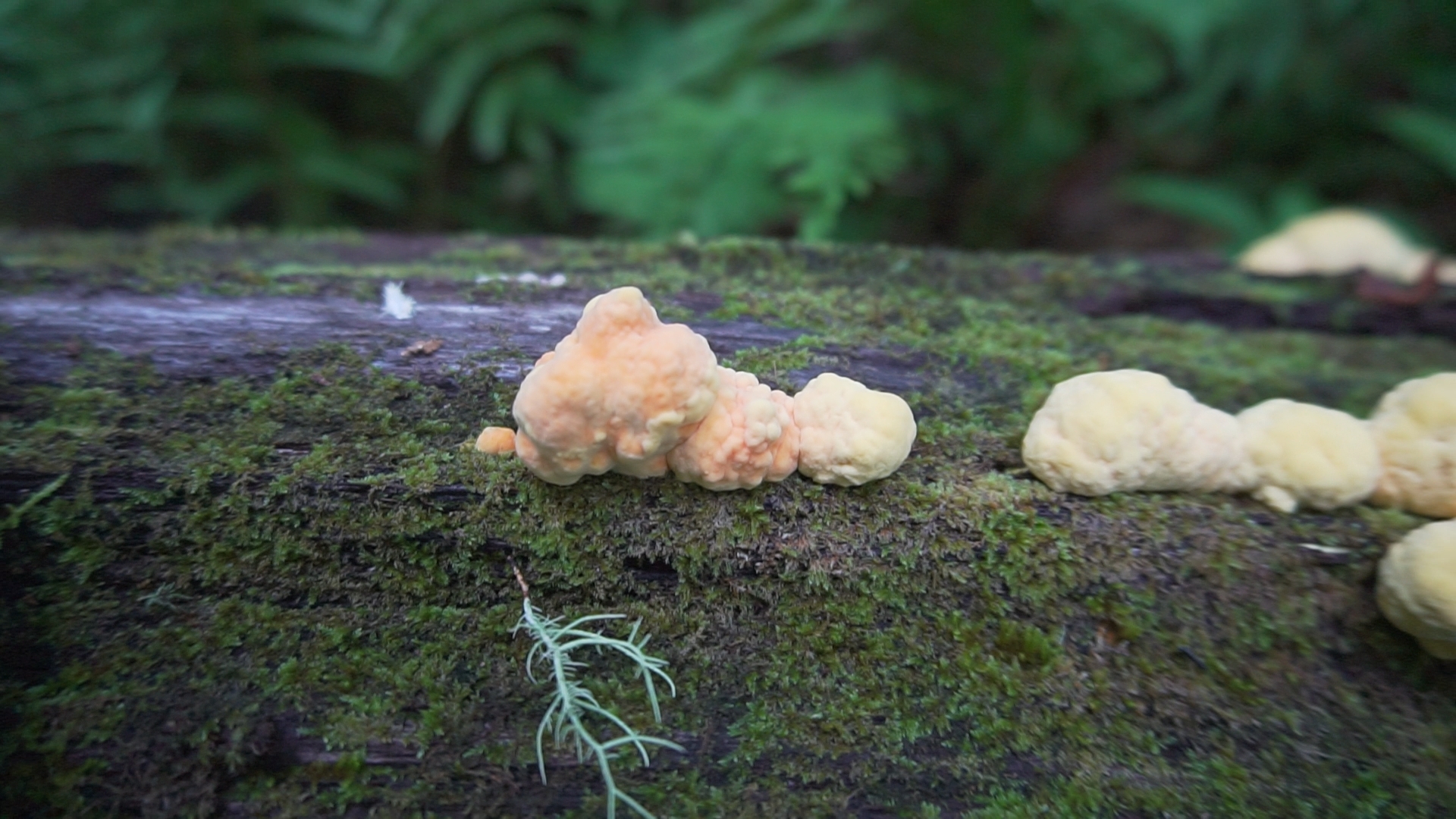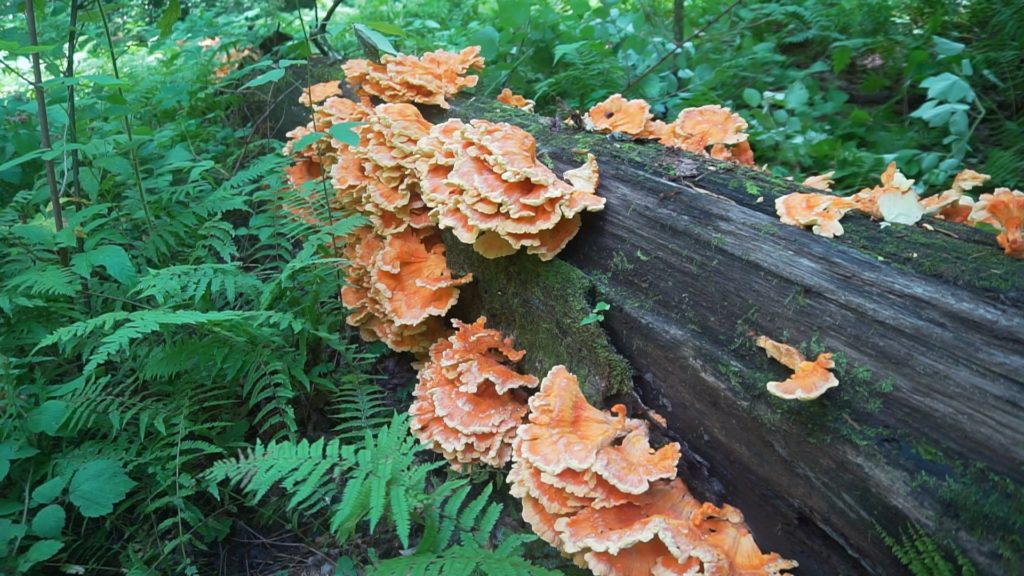Chicken of the Woods Life Cycle and Look-a-likes
Chicken of the Woods Life Cycle
Chicken of the Woods is one of most common and abundant mushrooms in the summer forest. In one summer week alone, I found 50 pounds of this delicious mushroom. These mushrooms have a similar texture and taste to chicken.
Chicken of the woods(Laetiporus Sulfureus) starts growing as yellow and orange nodes on hardwood trees and Logs. The mushroom is most common on oak trees, but it grows on other trees as well.

After a day or two, the nodes will start to form little chicken fingers. The mushrooms can be harvested at this stage, but it is best to be patient and wait till they flesh out.

Mature Chicken of the Woods will form in these large, often multi layered shelves.They will be easily identified by the bright orange on top and the solid yellow color on the underside. They have small, barely visible pores on the bottom. It is best to harvest early at this stage because the mushrooms get tough and chewy as they get older.

White Pored Sulphur Shelf

Cooking Chicken of the Woods
These mushrooms are a delicious culinary mushroom. They should be cooked before eating and are great cooked in butter. The mushrooms are very porous and absorb the flavor they are cooked in, so it is best to soak them in a sauce. Cooking them with bbq sauce is one of my favorite ways to prepare them.
Chicken of the woods is one of the foolproof four and is one of the easiest mushrooms to identify. That being said, there are a few mushrooms that look similar from a distance. Here are a few mushrooms that may be mistaken for chicken of the woods.
Chicken of the Woods Look-a-likes
Hapalopilus croceus has no common name and is an orange blob of a mushroom that looks like young chicken of the woods. This mushroom isn’t well studied and is either inedible or deadly poisonous. Fortunately, this mushroom is nowhere near as common as chicken of the woods. While Hapalopilus croceus prefers oak trees too, it can be distinguished from CoTW by it’s uniform color. Hapalopilus croceus is all one color and the underside is not yellow or white like CoTW.

Berkeley’s Polypore is another fungi that looks similar to chicken from a distance. The differences become apparent when up close. This mushroom is off-white to tan in color and forms as big rosettes at the base of hardwood trees. These mushrooms are edible when young, although they can be chewy.

Black Staining Polypore also grows at the base of hardwood trees and is off white to tan in color. These mushrooms are distinctive because they turn a brownish-black color whenever they are bruised or cut. These mushrooms are edible when young and have a stringy texture. They are good when made as a pulled pork style sandwich.

These poisonous orange mushrooms are known as Jack O Lanterns for their bioluminescent properties. These toxic fungi grow at the base of stumps, roots and trees. These mushrooms have true gills and are said to glow in the dark. These mushrooms are poisonous to eat, but they are OK to touch.
